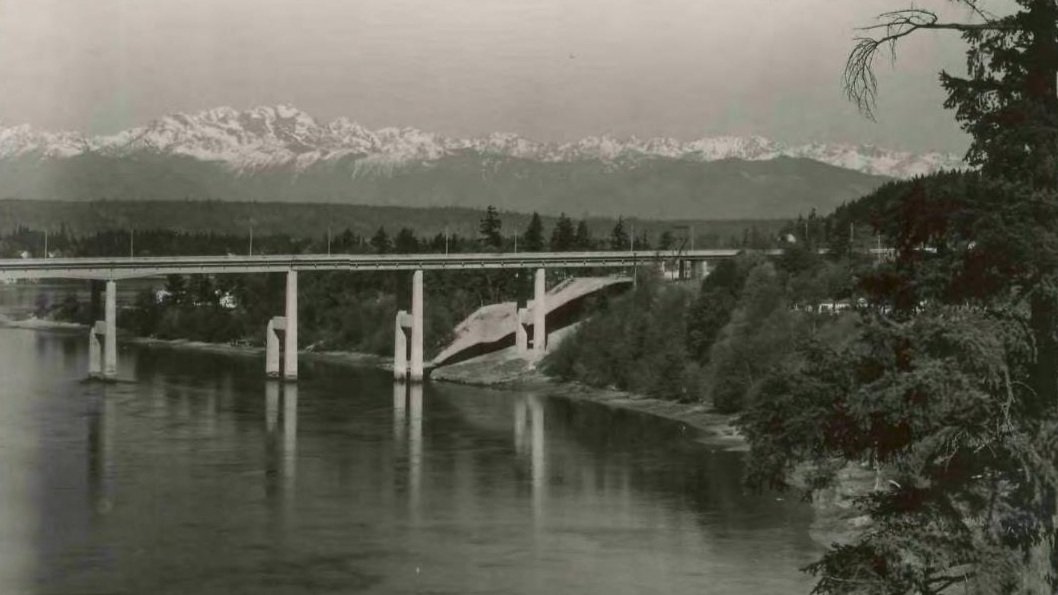This document provides updates to the Warren Avenue Bridge Feasibility and Alternatives Analysis, resulting from action of the Bremerton City Council and new information provided by the Washington State Department of Transportation (WSDOT). The update memorandum addresses the addition of “Alternative X”, introduced by the City Council, tracks revised direction provided by WSDOT regarding maintenance access, clarifies assumptions in bridge design criteria, and discusses the safety and operational performance of the walkway alternatives.
The following is from the Report’s Executive Summary:
The Warren Avenue Bridge Pedestrian Improvements project is a City of Bremerton-led effort to implement safe, multimodal, ADA-compliant walkways on the Warren Avenue Bridge. This Feasibility and Alternatives Analysis Report outlines the purpose and need for the project, the design alternatives considered by WSDOT and project stakeholders, community involvement in decision-making, and the screening criteria used to determine the preferred alternative.
Current conditions provide substandard facilities for multimodal users and fail to meet the requirements of the Americans with Disabilities Act (ADA). The SR 303 Corridor Study, completed in May 2021, outlines criteria for improvements on the Warren Avenue Bridge, suggesting 10-foot walkway widths. However, during discussions between the City and WSDOT, WSDOT stated that walkway widths on the bridge must be 8 feet or less due to the limitations of WSDOT inspection trucks. The Bremerton City Council rejected this limitation of walkway width and directed the completion of a feasibility and alternatives analysis.
Eleven design alternatives were developed after a review of transportation planning documents, communication with WSDOT, and input from project stakeholders. Alternatives varied from 8 to 16 feet wide, on one or both sides of the bridge.
Throughout the feasibility and alternatives analysis process, the project team focused on community involvement. A stakeholder advisory group was assembled with representatives of the Chamber of Commerce, Olympic College, Bremerton Parks Department, Bremerton Police Department, Bremerton Fire Department, the West Sound Cycle Club, Naval Base Kitsap, the Complete Streets Committee, Kitsap Transit, Kitsap Public Health, WSDOT, the Mayor, City Council President, and several others. Other public outreach methods included the creation and development of a project website, two open houses, and a public survey to gain feedback on existing usage, potential usage, and public preferences for the design alternatives. Public and stakeholder engagement created an ongoing conversation between the project team and the project users, ensuring that a broad range of perspectives were considered.
In order to analyze the alternatives and ultimately arrive at a single preferred alternative, the project team relied on three levels of screening: initial screening (Level 1), alternative evaluation (Level 2), and recommended alternative (Level 3).
Level 1 screening focused on a fatal flaw analysis, where any alternatives that were structurally infeasible or inaccessible for maintenance were removed from consideration.
Level 2 screening involved an evaluation of each alternative in terms of ADA-compliance based on three key preferences developed in partnership with the WSDOT Office of Equity and Civil Rights, the City of Bremerton ADA Committee, and a community survey. Key preferences included widening for pedestrians on both sides of the bridge, implementing equal-width walkways on both sides of the bridge, and adopting a walkway width of 10 feet or greater.
Level 3 screening evaluated the budget for each alternative.
Alternative 2, which consists of 10-foot active transportation paths on both sides of the bridge and a total of four 6’ x 24’ overlooks, was the recommended preferred alternative to best meet the needs of the community.
The report can be downloaded using the links below:
Feasibility and Alternatives Analysis
Appendicies:
A. West Sound Cycle Club Presentation, March 2021
D. Structural Design Memorandum and Cross Sections
E. On-Bridge Improvement Cost Estimations
F. UBIT letter by West Sound Cycle Club sent to Gov. Inslee and WSDOT leadership
G. Steve Roark response to West Sound Cycle Club UBIT letter
H. UBIT access memorandum by Sargent Engineers
I. Stakeholder Meeting Presentations and Minutes
J. Complete Streets Committee Presentation and Minutes
K. Project Website (as of September 2023)
L. Open House #1 Presentation Boards and Comment Response Forms
A detailed accounting of the construction process from 1957 through 1959 was kept by WSDOT, including many photos of the construction process. This glimpse back in time provides a unique perspective on the bridge’s construction.
Following the success of Kitsap Sun reporter Josh Farley’s 2018 Bridge to Bridge Tour, Leadership Kitsap decided to help develop a promotional map of the route. Here’s a link to that file, spotlighting stops along the three-mile loop where runners, walkers, and riders can enjoy views and other attractions between the Manette and Warren Avenue Bridges.
Beginning in 2019, the City of Bremerton and WSDOT joined to commission and oversee the creation of a design study for SR-303, assessing constraints and providing prioritized projects to help meet corridor needs as identified by a study team, a Stakeholder Advisory Group (SAG), and the public.
Here’s a copy of the finished document, which includes numerous recommendations regarding the full corridor, including the Warren Avenue Bridge.
In 2016, engineers from the City of Bremerton took part in a four-day workshop to consider ways to provide shared use access across the Warren Avenue Bridge, developing and evaluating several options that would meet project goals and budget constraints. Though recommendations developed in the workshop didn’t reflect a formal bridge analysis, the report, linked below, provides extensive details regarding the bridge and will help streamline efforts for this project.






